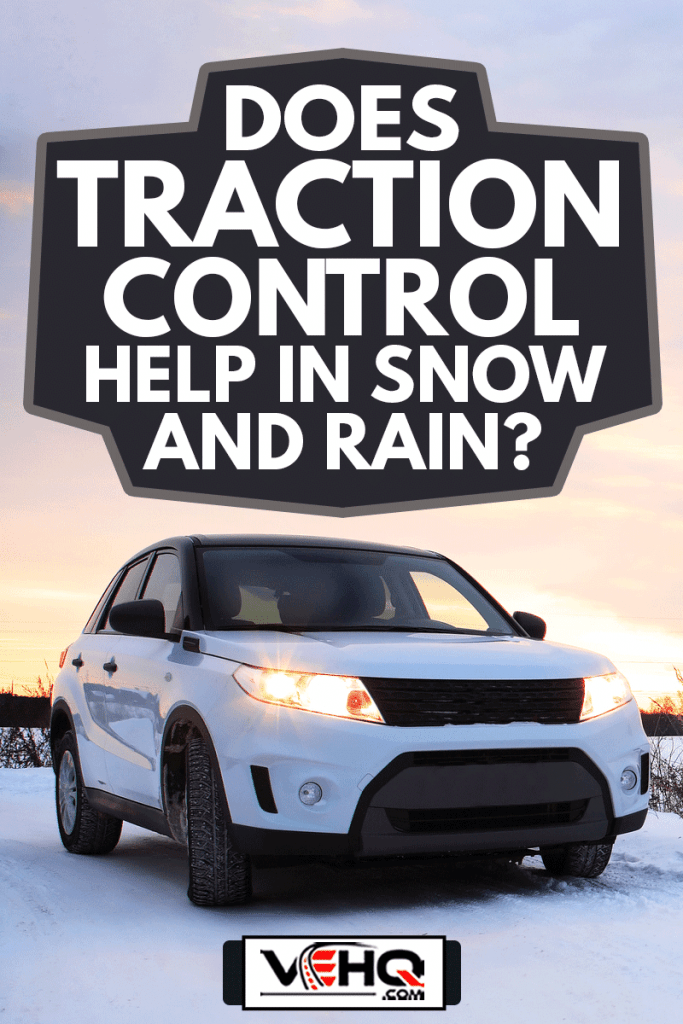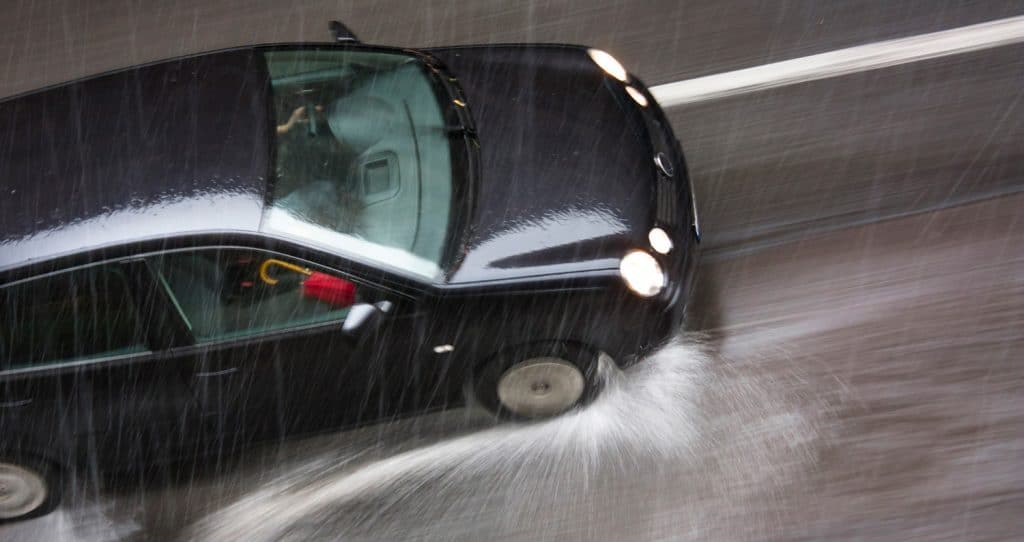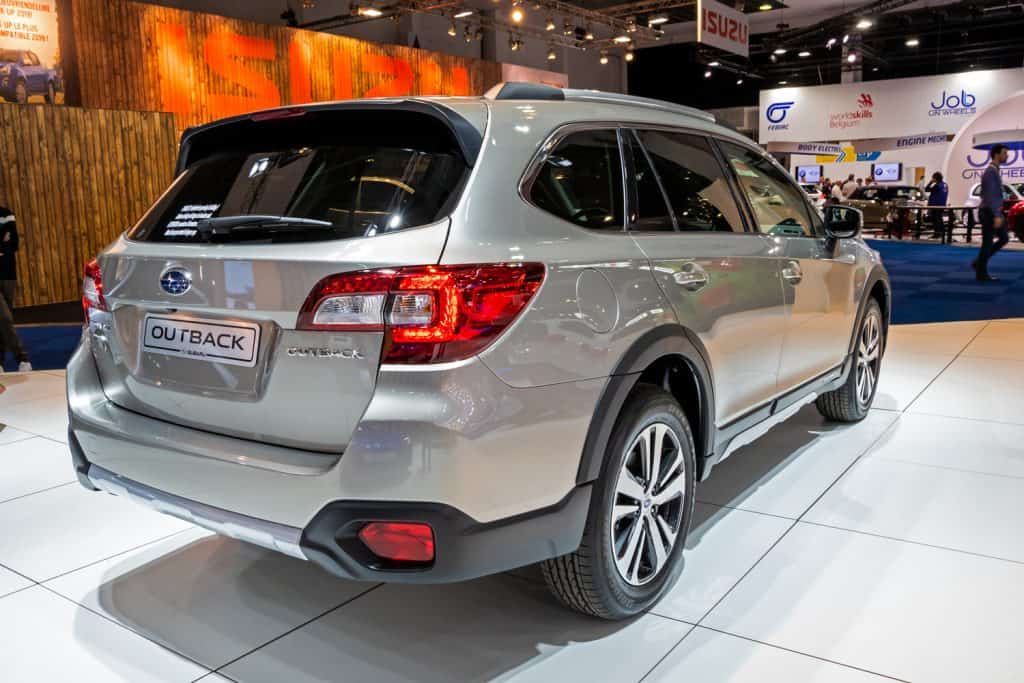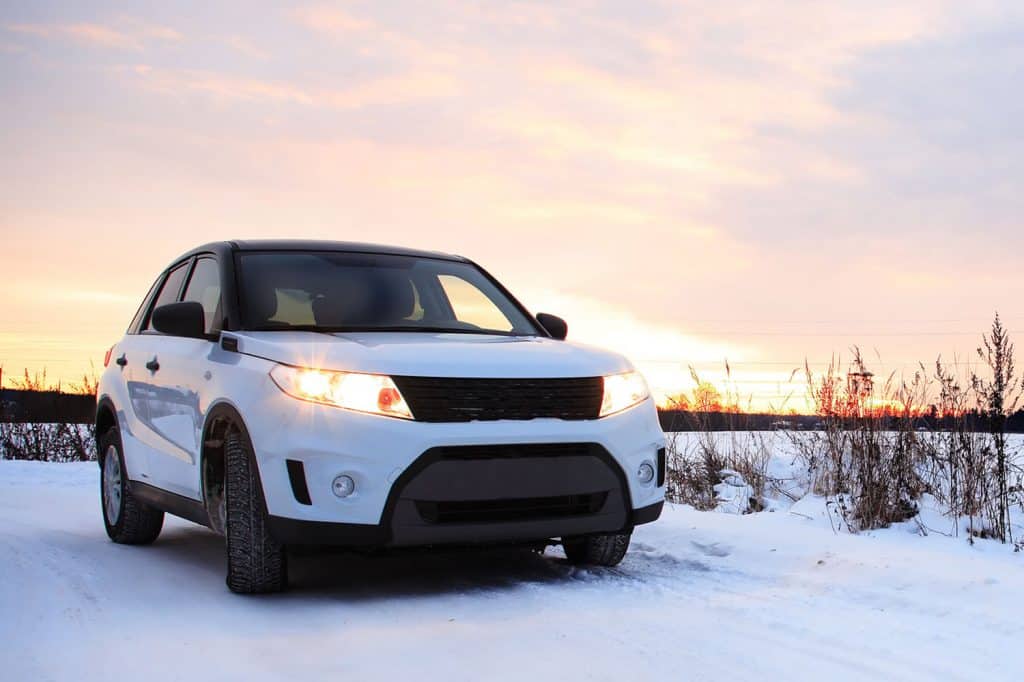Traction control is generally a standard feature in modern cars and for good reason. Traction control is extremely handy when in slippery situations. But does it help get traction when in snow and rain? We've done the research to bring you the answer.
Traction control is designed to help drivers maintain traction of the road. It does this by limiting the power and torque of the engine, which helps prevent spinning out on slippery surfaces like snow or rain.
If you're driving in wintry or wet weather conditions, it's recommended that you turn your traction control on for safety purposes.
Most newer vehicles automatically turn on traction control when you turn on the vehicle. This is the default mode of operation since you don't need to turn it off very often.
This article will take a closer look at how traction control works, when to use it, and why you would ever turn it off. So keep reading!

Does Traction Control Help In Snow And Rain?
Traction control is a great feature that many vehicles today come equipped with. This technology automatically controls the power delivered to each wheel on your car, depending upon what it needs most. It can be helpful in rain and snow conditions.
Traction control exists to help drivers maintain the most amount of traction possible. However, if you are trying this feature out during snow or rain, there are some things you need to know first.
Should I turn traction control on in snow?

At first glance, the traction control can be interpreted as an automated system that reduces power to specific wheels when a slip is detected.
However, as soon you floor it on snow, and nothing happens, this means there's some interference with how much force each tire applies. Traction control makes sure no one wheel goes out entirely, which would cause a skid or spin.
Traction control will not help you keep your car moving if the road conditions are too bad.
It's important to understand that this is not an all-wheel-drive feature, and it won't work like one either. But traction control does help tremendously in snowy conditions to avoid slippage on ice.
This is especially beneficial for front-wheel-drive and rear-wheel-drive vehicles.
Should you drive with traction control in the rain?

Traction control performs well in rainy conditions. It helps keep the tires from spinning when hitting slippery conditions. So for rainy days, you can rest assured that your vehicle will maintain a grip around corners.
The most widely used traction control systems apply the ABS to one wheel that is slipping or reduce power in all four wheels when a drivetrain has lost its grip. The latter is the most effective, but it can be hard to implement in bad weather.
When driving in the rain, be sure to avoid deep puddles when driving at high speeds. Just because you have traction control doesn't mean that you can't hydroplane. When you hydroplane, your vehicle could fishtail when it comes to grip the pavement again.
How can I get better traction in the rain?
Driving in the rain can be dangerous; however, there are a few simple tips to help you navigate wet roads this season:
Proper Tire Pressure
Ensure all valves are intact and remove the caps, then inflate each tire with an automatic pump or hand-operated tool like those found at gas stations with pressure gauges on them. Secure the caps so the tires stay inflated while driving around town.
You should also check if any cracks appear when inflating one wheel too much air until it's at recommended air pressure. Air pressure by vehicle can be found on the inside of the driver's door.
Be sure to check your tires at least once a month. If you live in an area where the air temperature changes regularly, it is good to check your tire pressure more frequently.
Check Tire Tread
Tires should have 1/16-inch tread depth to perform the way for which they were designed. This will help prevent skids and hydroplaning but also reduces rolling resistance by 33%.
Treadwear is one factor that can greatly reduce tire lifespan.
This becomes especially important when driving on surfaces like snow or sand since it makes them more susceptible, not just physically wearing down quickly as you drive over them with each revolution—but rather destroying them from beneath.
Having tires with low tread will decrease the tires' traction to the pavement in slippery or icy road conditions.
Regular Tire Rotations
Rotating your tires at least once every 6,000 - 7,000 miles is important to the health and safety of the vehicle. It ensures all four wheels have the most life.
Regular rotation prevents alignment problems and wear and thus keeps tires from constantly being replaced. Rotating the tires detects any issues with steering as well.
Slow Down
When driving in rainy road conditions, be sure to slow down. This will help you maintain traction around sharp corners. In addition, a slower pace allows the tires to get better traction and avoid skids when hitting the brakes.
Stay At A Safe Distance
Braking on wet roads is about three times longer than braking on dry surfaces.
This means that you should never tailgate another vehicle, and safely braking when it's raining or snowing means keeping more than two car lengths between yourself and vehicles ahead of you.
Recover From Skidding
Skids can happen to the most cautious drivers. If your car skids, remember not to slam on the brakes and not pump them if you have an anti-lock braking system (ABS). Instead, firmly apply pressure with both hands steering towards whichever direction of the skid.
Why would you turn traction control off?

While traction control is handy for keeping traction on snowy or rainy roads, it does have some downfalls. If you are stuck in deep mud or snow, traction control will hurt you more than it will help you.
When in this situation, turn your traction control off. Turning it off will allow the tires to spin. The continuous spinning of the tires can help you get unstuck. Try the rocking method when in this situation.
To do this, put the car in drive and go forward as far as you can. Then brake put the car in reverse and drive it back until the car stops again. Repeat this method until you can gain enough traction to get out.
Traction control may not be the best option when driving up a steep snowy hill because it could cause your wheels to slip and cut power.
Also, when driving up a steep hill with low traction, you will want your tires to continue to spin to get over the hill. Traction control will stop the tires from spinning, which could cause you to stop on a steep incline which isn't good.
Is AWD better in the rain?
All-wheel drive vehicles are great for drivers who live in regions with heavy seasonal weather like rain and snow.
All-wheel drive provides better traction on roads affected by inclement conditions, making them perfect for use during these types of seasons when you need maximum safety!
In rainy road conditions, traction control is a lifesaver for FWD and RWD vehicles. However, all-wheel drive vehicles have the leg up when it comes to ultimate traction. You should have no problem driving on wet roads if your car has AWD like a Subaru Outback or Audi A4.

Does traction control affect mileage?
According to MV Organizing, traction control has zero effect on gas mileage. This is because traction control doesn't come into play when driving unless needed. When it comes into play, it doesn't exert more fuel and affects your normal gas mileage.
However, driving without your traction control will improve your gas mileage. It will also help slow down tire wear over time. You can turn your traction control off if you live in an area where rain and snow conditions are rare.
In Closing

Overall, traction control is an important safety feature in every vehicle. When it comes time to travel on wet or icy roads, traction control will help get you there.
The only time you would want to turn off your traction control system is when you are stuck in deep snow or mud.
In addition, it is good to turn it off when driving up a steep, slippery hill. You won't even notice traction control is on and runs in the background when the car is started most of the time.
If you enjoyed this article, then you might also like:
Do Truck Stops Have RV Dump Stations?
The 5 Types Of Combustion Chambers To Know
Can You Drive Without A Catalytic Converter?
Do you ever turn traction control off? Let us know when and why below!
